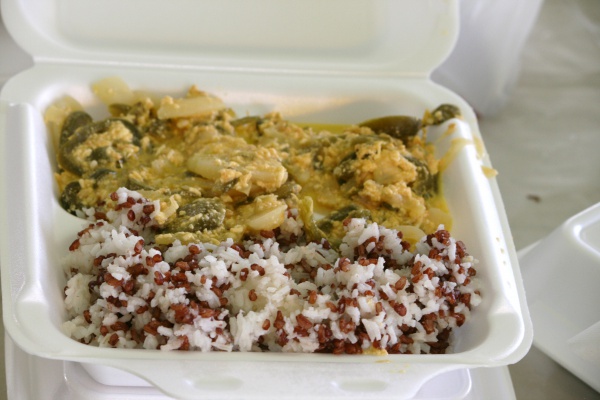Facts About Bhutanese cuisine
Bhutanese cuisine is a delightful blend of flavors and ingredients that vary by region. Across different parts of the country, you'll encounter staples such as red rice, buckwheat, maize, and white rice. The diet often includes meats like chicken, yak, dried beef, pork, and lamb. Soups and stews are also popular, featuring ingredients like rice, ferns, lentils, and dried vegetables, all elevated with chili peppers and cheese.
One of the standout dishes is Ema Datshi, a spicy concoction of chili peppers in a cheesy sauce, considered the national dish. Another favorite is Zow Shungo, a hearty rice dish mixed with vegetables. You might also enjoy Jasha Maru (a spicy chicken dish), Phaksha Paa (pork with red chilies), Thukpa (noodle soup), Bathup (another type of noodle soup), and various versions of fried rice.
Cheese plays a significant role in Bhutanese cuisine, especially varieties like Datshi and Zoedoe. For snacks, you can't go wrong with Momo (dumplings), Shakam Eezay (dried beef with chili sauce), Khabzey (fried dough), Shabalay (meat-filled pastries), Juma (traditional sausage), and a range of noodles.
Dining out in Bhutan offers a mix of flavors. You'll find restaurants serving Chinese, Nepalese, Tibetan, and Indian dishes, with Korean cuisine also gaining popularity. Dairy products, particularly butter and cheese from yaks and cows, are widely enjoyed.
Regarding beverages, Bhutanese people enjoy butter tea, milk tea, black tea, Ara (a type of rice wine), and beer. Common spices include curry, cardamom, ginger, Sichuan pepper, garlic, turmeric, and caraway, which impart rich flavors to the dishes.
An endearing custom in Bhutanese dining etiquette is worth noting. When someone offers you food, it's polite to initially refuse by saying "meshu meshu" and covering your mouth with your hands. You should then accept the offer on the second or third attempt to adhere to Bhutanese manners.

 China
China